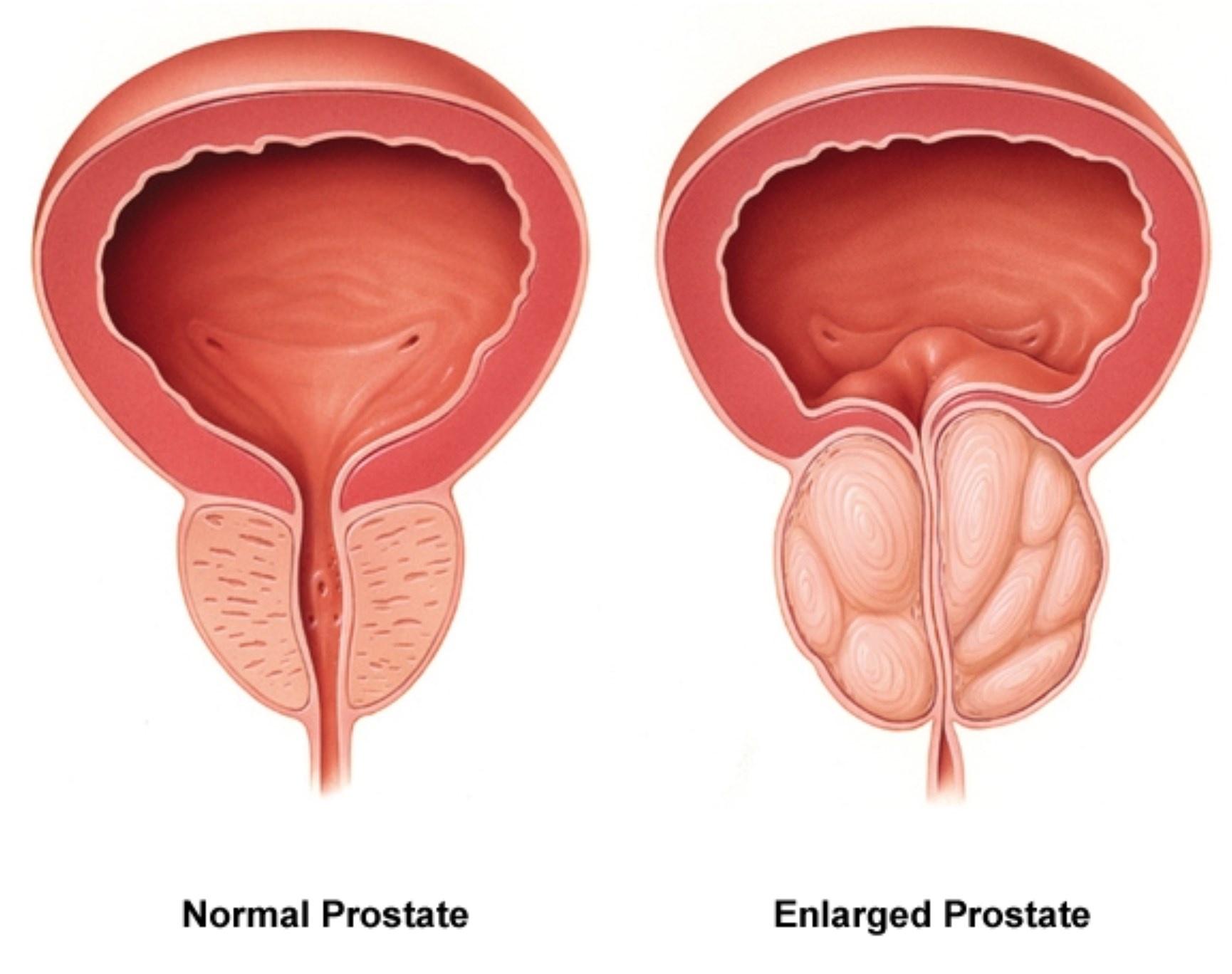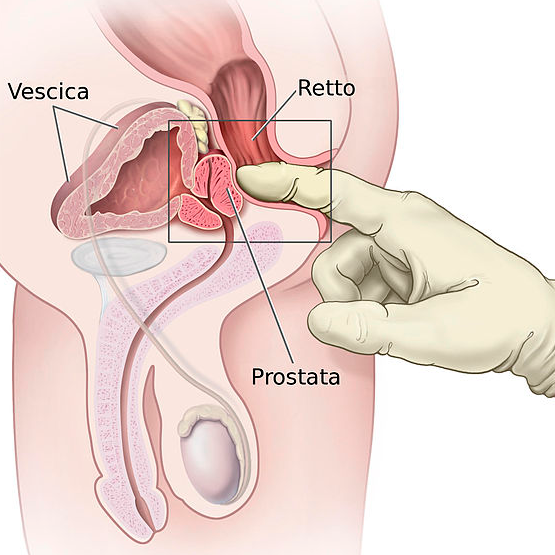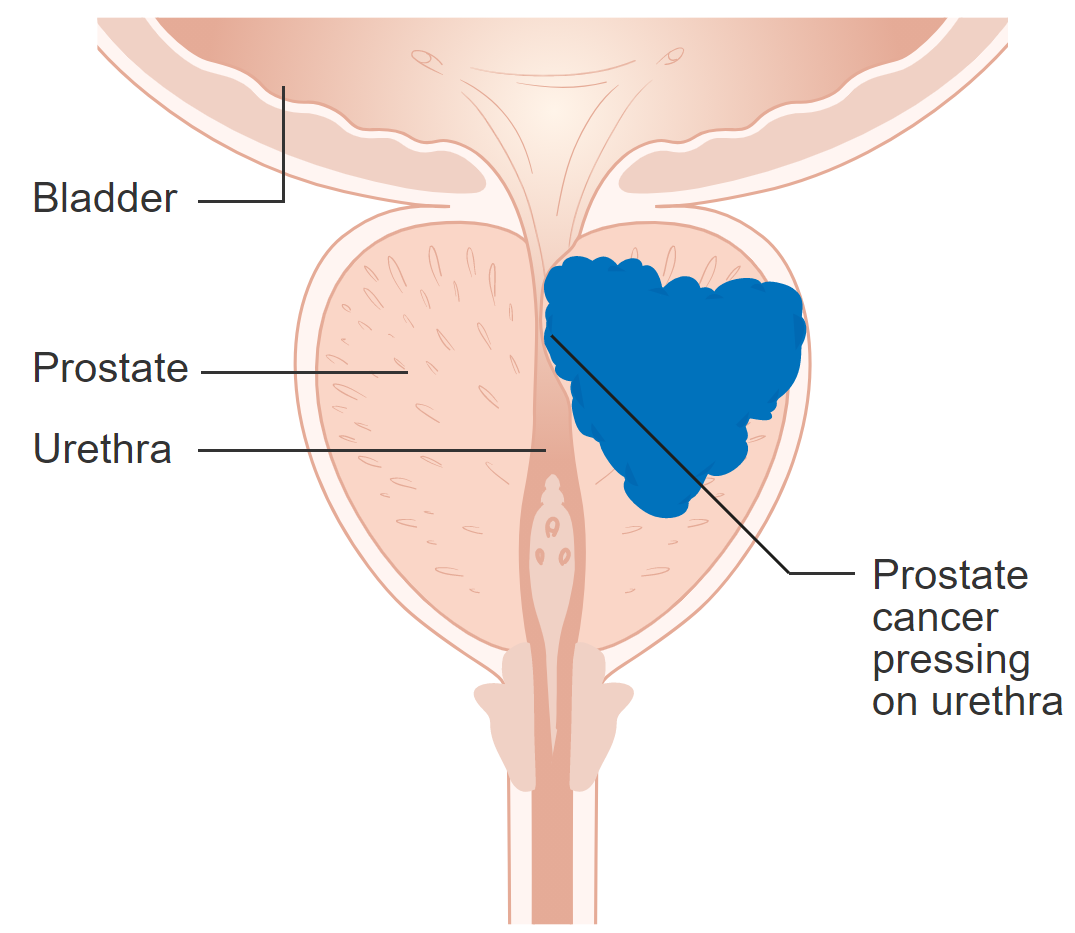Benign prostatic hyperplasia (BPH)
This is one of the most common urological conditions affecting older males. The prostate enlarges in the center (as opposed to prostate cancer growing posteriorly) and obstructs the urinary flow through the urethra.

Symptoms
On average patients are >50 years old with lower urinary tract symptoms:
- Hesitancy
- Inability to void fully
- Weak flow
- Nocturia
- Frequency
Diagnosis
- Clinical
- Digital rectal exam (DRE)

- Rubbery, smooth prostate
- No nodules
- Digital rectal exam (DRE)
- Lab
- Urine cultures and urinalysis can be done to rule out a UTI
- Biopsy
- Not needed for BPH
- Only biopsy if prostate cancer is suspected
- PSA
- Not used for prostate cancer screening any more
- If they have BPH symptoms, initiate treatment
- If there are symptoms of prostate cancer then order PSA
Management
- Medical
- Alpha-blockers
- Tamsulosin (flomax), doxazosin, etc.
- Side effect of orthostatic hypotension
- Will dilate the bladder but will not affect the prostate
- 5-alpha reductase inhibitors
- Finasteride
- Will directly inhibit prostatic hyperplasia
- Takes longer to take effect
- Finasteride
- Alpha-blockers
- Surgical
- Trans-urethral-resection of the prostate (TURP)
- Can cause erectile dysfunction (ED) and incontinence
- If there are signs of post-renal (obstructive) kidney injury, TURP can be attempted if catheter placement fails to work
- Creatinine will be up
- Abdominal distention can be observed
- A catheter will be placed first
- In and out
- Foley
- Suprapubic prostate
- If catheters fail, TURP will be necessary
- Trans-urethral-resection of the prostate (TURP)
Prostate cancer
Prostate cancer is a disease of old age in males driven by testosterone. The average age for patients is >70 years old and most of them will die with prostate cancer but not from it. Because of this, asymptomatic screening is no longer done routinely. Symptoms of prostate cancer are similar to BPH as discussed above with lower urinary tract (UT) symptoms and sometimes symptoms of obstruction.
Diagnosis

- Screening
- Asymptomatic
- If they have a first-degree relative affected by prostate ca
- Symptomatic
- Symptoms of post-renal obstruction and lower UT symptoms (hesitancy, frequency, incomplete emptying)
- Digital rectal exam
- Nodular, firm prostate one xam
- PSA
- Done if prostate ca is suspected (+DRE for instance)
- Helpful to assess disease progress and treatment success
- Prostate biopsy
- Transrectal
- Better biopsy because prostate ca forms on the outside of the prostate
- Multiple samples were taken and Gleason score calculated

- Transurethral
- Transrectal
- Asymptomatic
Management
- Obliteration of the prostate
- Surgical resection
- Radiation
- Brachytherapy
- Testosterone supression
- Anti-androgens
- GnRH analogs
- Orchiectomy
- Removal of testis bilaterally will stop testosterone production
- Suitable for older males who are not sexually active
- PSA
- Assessment of treatment success
- If PSA is increasing without symptoms, use antiandrogens
- If PSA is increasing with symptoms, use radiation
In general most of these methods will result in erectile dysfunction and urinary incontinence.
All information provided on this website is for educational purposes and does not constitute any medical advice. Please speak to you doctor before changing your diet, activity or medications.
